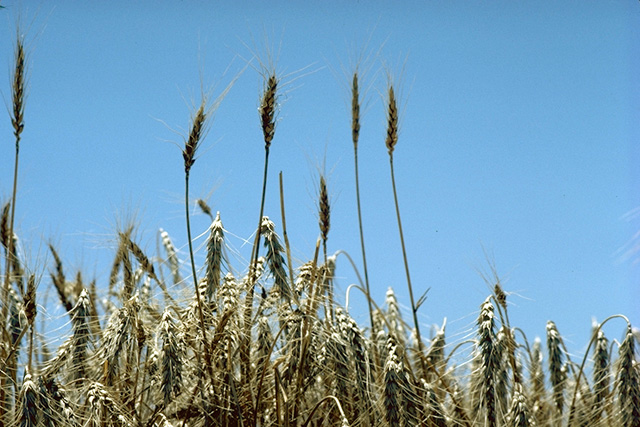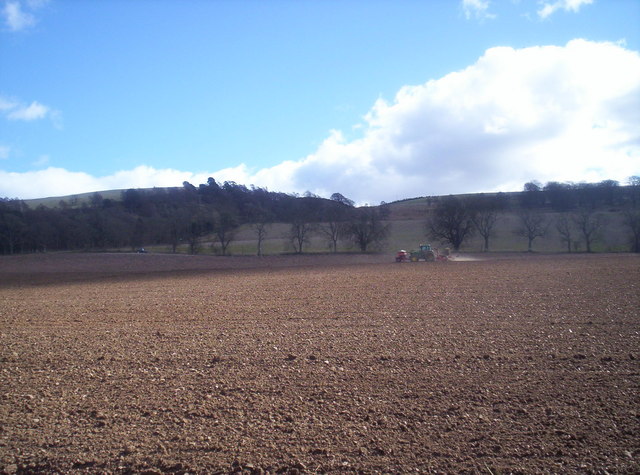Team:BCCS-Bristol/Human Practices/Marketing Campaign/Product Specification
From 2010.igem.org
iGEM 2010
Contents |
Hypothetical Product Specification: Introduction
The achievements of the wet lab and modelling are used to inform our hypothetical product which will be the subject of our publicity campaign. Work by our wet lab is used as a proof of concept: confirming that our bacteria can be successfully engineered, sealed inside beads and react to soil nutrients.
The details of our product and potential market are intended to frame a scenario in which to place our advertising material. By assuming the extensive and time-consuming groundwork and product development to be complete, we will create materials to spark interest and catch public attention to inform debate, rather than providing a detailed guide to bringing a synthetic organism to market.
There are many challenges to develop this initial work into a product fit for sale. A comprehension of these puts our campaign in context, and highlights some of the issues faced by synthetic biology. Producing a working and marketable device is not pivotal to our objective of comprehending and reacting to the public perception of synthetic biology technology, however some of the legislative and regulatory stages are considered later.
The Specification
There are several angles that need to be considered before we can use our project as the subject of a publicity campaign. These include:
- the target market: a product for smaller-scale arable farmers
- how our product relates to our existing project work: claims and their relation to the wetlab
- selling points and the motivation for its development: evidence of a need for the product
A product for smaller-scale arable farmers
For our product to be plausible, it must be attractive to our target market, which will be primarily arable farmers.
To reduce extra work involved in the use of the beads, they need to be engineered such that they can be spread simultaneously with seeds, and detected at the same time as variable fertilising. This prevents the need for significant extra driving on land, which is costly and polluting. Therefore the beads must be:
- Comparable in size to seeds: able to be mixed and spread simultaneously
- Able to react to nutrients in the time between seeding and fertilising
- Readable in the driving distance time between tractor and trailer: to be sensed and reacted to as fertiliser is being spread
There are competing products available, such as satellite imaging technology that estimates nutrient needs from the reflection from the crop canopy. To be competitive, our angle is to bring precision farming to smaller farmers, for whom it may not be viable to install expensive systems. It appears that our device will also be better placed in the farming calendar than these, as it targets the initial fertilisation of the crop.
- Keep it cheap: set-up costs are one in-cab ‘technology box’ to read the bead signal and link in to either a variable fertiliser spreader or a manual display
- Bead prices per sack must be offset by the fertiliser savings: manufacturing of our beads needs to be economically viable
For the purposes of our campaign, it is also assumed that our product has passed extensive trials. Informed by our wet lab and modelling work we shall claim in our advertisements:
- The E. coli strain we have used is safe: it is not harmful and cannot live in the wild
- The bacteria are contained within a bead, minimising escape and interaction with the environment
- There has been minimal engineering of the genome, reducing the chance of deliberate misuse
The beads must be subjected to extensive trials and proven to be safe, passing EU and UK legislation for use. For profitable sale, they must also be patentable or protectable in some way. These issues are explored further later.
Claims and their relation to the wetlab
These claims can in part be supported by the work of our wet lab:
- Comparable in size to seeds
The beads are of about 4mm diameter. Seed potatoes must be larger than 25mm [http://topveg.com/2010/01/size-of-seed-potatoes], maize are about the size of peas [http://en.wikipedia.org/wiki/Maize#Seeds]. Variable spreader technology may be able to cope with even spreading of different sized objects simultaneously, otherwise we will have to look into costing an attachment that is cheaper than the fuel and time saved by another pass over the fields.
- React to nutrients in the time between seeding and fertilising
The lab beads have shown colour change within a few days, and the bacteria appear to perish after about a week (anecdotal evidence), as signal reduces.
“As a general principle, nitrogen should be applied at the start of periods of rapid crop growth and nitrogen uptake” [http://www.defra.gov.uk/foodfarm/landmanage/land-soil/nutrient/documents/rb209-rev-100609.pdf]. The DEFRA guidelines suggest variability between recommended nitrogen fertilisation timings – some on the seedbed, some at the small plant stage [http://www.defra.gov.uk/foodfarm/landmanage/land-soil/nutrient/documents/rb209-rev-100609.pdf]. More investigation is needed to ascertain whether the signal of our beads can penetrate through small plants to be read effectively and be of use to later fertilised crops. Our bead lifetime may also need to be variable, to avoid extra driving, but also to remain effective, or a crop-specific selection of products developed.
- Keep it cheap
Farmers are already spending money on in-cab technology. A custom-built box will need to be developed, comprising a camera, UV lamp for increased bead detection and software to convert this into signal for the variable spreaders, which are already in use.
- Readable in the driving distance time
The production of our in-cab ‘technology-box’ (consisting of a camera, UV lamp and image processing software) will need investigation into the processing time of a viable and affordable image detection method and translation into variable spreading.
- Bead prices per sack
The costs of scaling up our production are currently unknown, as we have been producing a very small amount in the lab. Scaling up our process and the costs incurred by trials and legislative hurdles need to be explored more thoroughly. Fertiliser prices will also need further investigation to ensure our beads are viable, and also to work out whether this might be an economically sensible venture.
- Density of beads
Our modelling achievements mean that BSim can be used to estimate the density of beads required to achieve the necessary signal strength and field coverage to build an accurate nutrient map.
- The E. coli strain we have used is safe
The Escherichia coli, strain K-12 substr. MG1655 is a disabled laboratory strain. Its survival in the wild needs further research for proof that it will in fact die in the environment. It will need some modification to address the antibiotic resistance and prevent it from transferring to other organisms.
- Bead escape
BSim simulations can be used to generate a preliminary estimate of the bacteria leak from the beads, drawing on our modelling work.
- Chance of misuse
Our bacteria senses nitrogen and fluoresce – these are not dangerous abilities that can be turned into weapons.
References
[1] [http://topveg.com/2010/01/size-of-seed-potatoes TopVeg, accessed September 2010]
Evidence of a need for the product
Our beads will be primarily for sale to arable farmers. There may also be scope for extension to home growers. To increase uptake of our product, and justify its existence beyond just financial savings, governments may be interested in its environmental benefits relating to carbon emissions and eutrophication targets. Agriculture is a major consideration of environmental pollution. It has been asserted that it is the second largest source of greenhouse gases in the UK [http://www.ghgi.org.uk/sector.html], releasing CH4 and N2O. Accounting for 7% of UK greenhouse gas emissions, agriculture and forestry are responsible for 66% of nitrous oxide emissions. [http://www.official-documents.gov.uk/document/cm67/6764/6764.pdf] Specifically, to make 1 tonne of nitrogen fertilizer requires 1 tonne of oil and 108 tonnes of water, giving off over 7 tonnes of CO2 equivalent greenhouse gases. [http://www.whyorganic.org/LinkClick.aspx?fileticket=EttWlupviYA%3d&tabid=215]. By using our product and fertilising more effectively, farmers can reduce their greenhouse gas emissions.
Eutrophication is another problem in the European Union, with predicted risk widespread in 2020. [http://www.eea.europa.eu/data-and-maps/indicators/exposure-of-ecosystems-to-acidification-2/exposure-of-ecosystems-to-acidification] Agriculture has been identified as a major cause of nitrogen pollution, run-off being responsible for between 50 and 80%. [http://ec.europa.eu/environment/integration/research/newsalert/pdf/6na3.pdf] By reducing unnecessary fertiliser spread on British fields, we would hope to impact upon nitrogen pollution and eutrophication levels, reducing the harmful ecological impact of excessive fertilisation.
The competition
There are precision farming techniques on the market already, making claims about savings from more economical fertiliser use. These claims will be used to form the basis of our claim for reducing costs, although the method of detection is different and one of our selling points is the accessibility to small farmers, and scale will result in different savings figures with our system.
A large competitor is SOYLsense, who sell satellite nutrient maps of fields for variable fertiliser spread, created using a measure of light reflected from the crop canopy. [http://www.soyl.co.uk/how-soylsense-works.aspx] Their claims can be used to base our figures for nitrogen savings:
- Precision farming gets results: “SOYLsense is based on original HGCA funded research that showed a benefit of £22/ha over uniform application of N. Analysis of results from SOYLsense customers showed a benefit of £30/ha+ when comparing yield and N usage for variably applied fields and uniformly applied fields. Yield responses of between 3% and 8% have been reported by many SOYLsense users.” [http://www.soyl.co.uk/soylsense.aspx]
- “Target nitrogen and gain up to £45 per hectare.” [http://www.soyl.co.uk/Default.aspx]
Precision farming is already being promoted for its environmental benefits. Our unique selling points will be:
- Accessibility to small farmers: Keeping our set-up costs low will mean benefits over smaller farm areas: the running cost of the service will be the beads alone.
- Price varies for land area, not reliant on large capital spend: Beads will be fairly priced, and by virtue of purchasing only that needed to cover the land available, small farmers can buy smaller quantities, rather than making a large investment.
Conclusion
Our product will be cheap and effective on a small scale, targeted at smaller scale arable farmers who wish to use precision farming techniques to save fertiliser. The wet lab work has been used as a basis for some of these claims, as well as investigation into current advertised savings from other methods and consideration of farming methods. The modelling tools that we have developed also have the potential to further inform other aspects and claims about our product such as the density and leak of our beads. The environmental motivation of saving greenhouse gas emissions and reducing eutrophication will be promoted alongside saving farmers’ money.
 "
"

